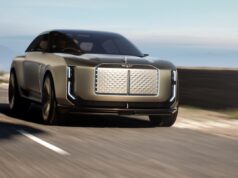Hyundai has created the strongest rival yet to the Toyota Prius with the arrival of the Ioniq. Just like the Prius, the Ioniq is offered in hybrid and plug-in hybrid versions, but it even goes one step further with the fully electric Ioniq Electric. While the Ioniq Electric is the ultimate version of the Ioniq if “zero emissions” is your goal, but it’s limited by its 124 mile driving range. Want the best of both worlds? Then go with the Ioniq Plug-in Hybrid.
Why? For starters the 2018 Ioniq Plug-in Hybrid can travel up to 29 miles in electric mode, which may not seem like that much, but that’s enough for the average one way commute to the office. Find an electric charger near your office and you won’t have to worry about using the gas engine, but once the battery is depleted the Ioniq PHEV will continue to go for about another 600 miles.
The Ioniq Plug-in Hybrid’s pricing also lands in the middle of the Ioniq Hybrid and Ioniq Electric, with pricing starting at $24,950, $2,750 more than the Ioniq Hybrid before any tax incentives. The Ioniq PHEV is available for a $4,543 federal tax credit and if you live in California, it’s eligible for an additional $1,500 rebate. Apply for both of those and the Ioniq PHEV is a better value than the Ioniq Hybrid.
On the road the Ioniq Plug-in Hybrid drives nearly identical to the Ioniq Hybrid. It’s powered by a 1.6L four-cylinder engine with 104 horsepower and 109 lb-ft. of torque that’s mated to an electric motor with 60 horsepower and 125 lb-ft. The Ioniq Plug-in Hybrid gets a larger 8.9 kWh lithium-ion battery pack compared to the 1.56 kWh battery in the Ioniq Hybrid. You won’t find an annoying CVT here, since the Ioniq PHEV sends its power to the wheels via a six-speed dual-clutch transmission. The Ioniq Plug-in Hybrid’s electric motor generates 17 more horsepower than the Ioniq Hybrid, but the extra hardware also means that Ioniq PHEV weighs up to 302 pounds more.
With the battery charged the Ioniq Plug-in Hybrid can travel at speeds up to 75 mph in EV mode and once you need to recharge it, it takes just over 2 hours using a 240-volt charger. In hybrid mode the Ioniq Plug-in Hybrid is rated at 52 mpg, which is 3-6 mpg lower than the Ioniq Hybrid’s combined rating. The EPA has also rated the Ioniq PHEV at 119 MPGe, which is lower than the Prius Prime’s 133 MPGe rating. Speaking of the Prius Prime, the Ioniq Plug-in Hybrid has a slightly longer driving range 29 vs 25.
Around town the Ioniq Plug-in Hybrid feels zippier than you might expect from a plug-in hybrid, which is largely due to the electric motor’s 125 lb-ft. of torque. Slide the gear shifter to the left and you’ll activate the Sport mode, which improves the throttle response and even changes the gauge cluster to show a tachometer. The Ioniq PHEV’s low rolling resistance tires are its only downfall, since there’s a lack of grip and like most hybrids, the electric power steering could provide a bit more feedback. Settings for the regenerative braking system, like in the Ioniq Electric would also be a nice addition to help increase the EV driving range.
At the end of the day, which one should you choose? It all depends on your driving needs and possibly even your housing situation. The Ioniq Plug-in Hybrid represents the best of both worlds, since it can travel up to 29 miles in electric mode without any large compromises compared to the Ioniq Hybrid. The biggest reason buyers would choose the Ioniq Hybrid over the plug-in hybrid would be lack of access to charging infrastructure. The Ioniq Plug-in Hybrid doesn’t make sense if you don’t have access to a power outlet at home, the office or anywhere convenient.
But if you do have access to even a standard 110-volt outlet you can recharge the Ioniq Plug-in Hybrid in under nine hours.
The 2018 Ioniq Plug-in Hybrid is available in base and Limited trim levels with the base trim level starting at $24,950. The Limited trim level starts at $28,300 and adds features, like Blind Spot Detection, leather seats, LED headlights, a 7-inch TFT LCD instrument cluster and a power driver’s seat. The available Ultimate package is available for an additional $3,750 and adds a sunroof, automatic emergency braking, Smart Cruise control, Lane Keep Assist, rear parking sensors, a navigation system, HID headlights and wireless device charging.





























